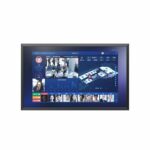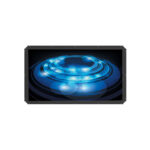This process is applicable to the process for manufacturers to find a third-party laboratory to apply for CE certification:
The first party is the laboratory within the organization, which tests/calibrates the products produced by itself, or entrusts a laboratory to test/calibrate the products and data produced by itself on behalf of it for my use, in order to improve and control the quality of the products produced by itself. The second party is also a laboratory within the organization, calibrating/testing the products provided by the supplier, or entrusting a laboratory to test/calibrate the products provided by the supplier on its behalf. The data is used by me for the purpose of providing and controlling the quality of the supplier’s products. The third party is a laboratory that is independent of the first and second parties and provides testing/calibration services for the society. The data is used by the society for the purpose of providing and controlling the quality of the society’s products. In addition, the first, second, and third-party laboratories can be converted to each other, and the third party can program the first and second parties, and the first party can also be the second party at the same time. A laboratory is a typical first-party laboratory if it is a department of an institution that performs testing or calibration and only provides internal services to the institution.
- The manufacturer’s relevant laboratory (hereinafter referred to as the laboratory) submits an oral or written preliminary application.
- The applicant fills in the CE-marking application form, and sends the application form, product instruction manual and technical documents to the laboratory (if necessary, the applicant company is also required to provide a prototype).
- The laboratory determines the inspection standards and inspection items and quotes.
- The applicant confirms the quotation and sends the samples and relevant technical documents to the laboratory.
- The applicant provides technical documents.
- The laboratory issues a fee notice to the applicant, and the applicant pays the certification fee according to the fee notice.
- The laboratory conducts product testing and reviews technical documents.
- Technical file review includes:
- Is the file complete.
- Whether the document is written in the official language of the European Community (English, German or French).
- If the technical documents are incomplete or the specified language is not used, the laboratory will notify the applicant for improvement.
- If the test fails, the laboratory will promptly notify the applicant, allowing the applicant to improve the product. So, until the test is qualified. The applicant should make changes to the technical data in the original application to reflect the actual situation after the changes.
- For the rectification fees involved in Articles 9 and 10 on this page, the laboratory will issue a supplementary fee notice to the applicant.
- The applicant is required to pay the rectification fee according to the supplementary fee notice.
- The laboratory provides the applicant with the product test report or technical file (TCF), as well as the CE certificate of conformity (COC), and the CE mark.
- The applicant signs the CE guarantee self-declaration and affixes the CE mark on the product.











